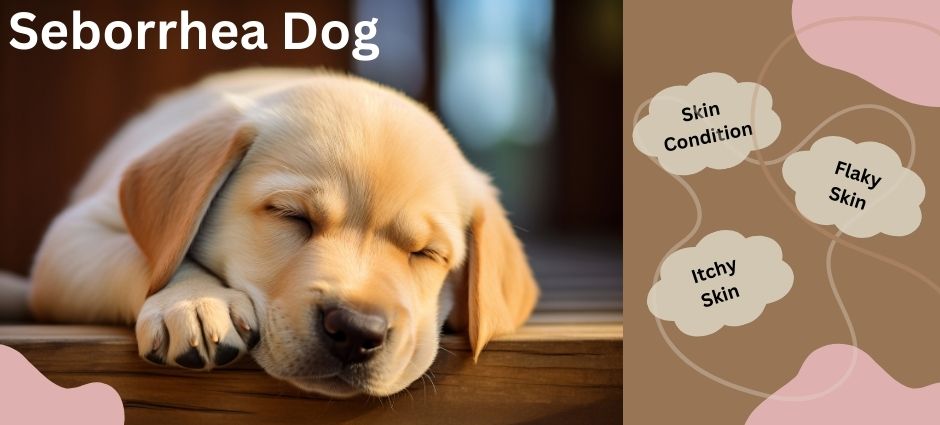Seborrhea Dog. It sounds complicated, doesn’t it? But fear not, pup parents! Seborrhea in dogs, while a common skin condition, is often manageable with the right knowledge and care.
We understand how frustrating and uncomfortable it can be for your furry friend to deal with itchy, flaky skin.
So, let’s delve into the world of canine seborrhea, uncovering its causes, symptoms, and most importantly, how to help your chunky dog find relief.
Also read about dog mouth ulcers that can be harmful too.
What is Seborrhea Dog?

Seborrhea refers to a condition where a dog’s sebaceous glands, located under the skin, overproduce sebum, a natural oil that keeps their skin and coat healthy. This overproduction can lead to two main types of seborrhea in huge fluffy dogs:
- Seborrheic Dermatitis: This is the most common type and can manifest in two forms:
Oily Seborrhea: Here, the excess sebum creates a greasy, oily coat with a strong, unpleasant odor. The skin can also appear red and inflamed, causing discomfort and itching.
Dry Seborrhea: In this form, the skin becomes dry, flaky, and scaly. Itching is still common, and the coat can appear dull and brittle.
- Primary Seborrhea: This is a genetic condition seen in certain breeds like Shar-Peis, Cocker Spaniels, and West Highland White Terriers. It typically develops between the ages of 6 months and 2 years.
What Causes Seborrhea Dog?
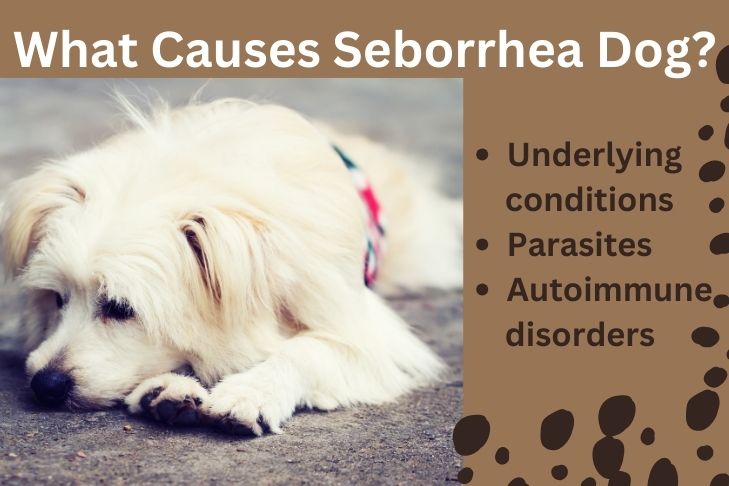
The cause of seborrheic dermatitis (the most common form) isn’t fully understood, but several factors are believed to contribute to huge fluffy dog breeds:
- Underlying conditions: Skin allergies, hormonal imbalances (like hypothyroidism), nutritional deficiencies, and even yeast or bacterial infections can disrupt the skin’s balance and trigger seborrhea.
- Parasites: Fleas and mites can irritate the skin, leading to excessive oil production.
- Autoimmune disorders: These can disrupt the normal function of the skin and sebaceous glands.
Signs and Symptoms: How to Spot a Seborrhea Dog
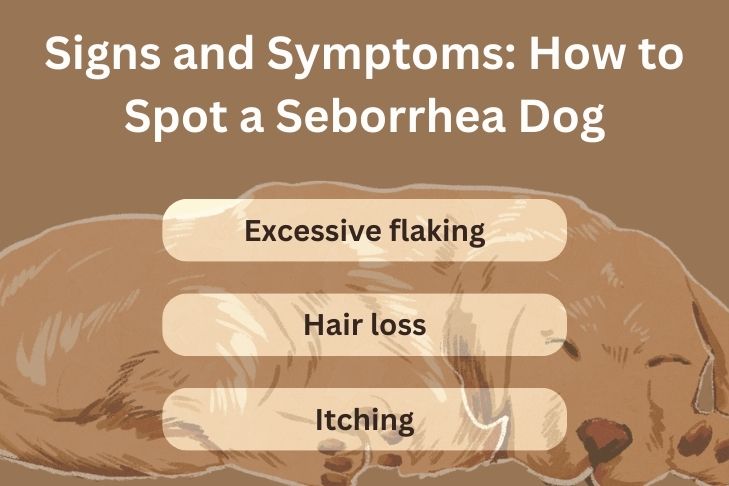
Knowing the signs of seborrhea can help you catch it early and get your dog the treatment they need. Watch out for:
- Excessive flaking: This can be dry and white (dry seborrhea) or oily and greasy (oily seborrhea).
- Itching and scratching: Seborrhea can cause significant discomfort, leading to excessive scratching and potential secondary infections if the skin is broken.
- Hair loss: This can be patchy or generalized, depending on the severity of the condition.
- Unpleasant odor: Oily seborrhea often comes with a strong, musty smell in your large fluffy dog.
Treating Seborrhea Dogs
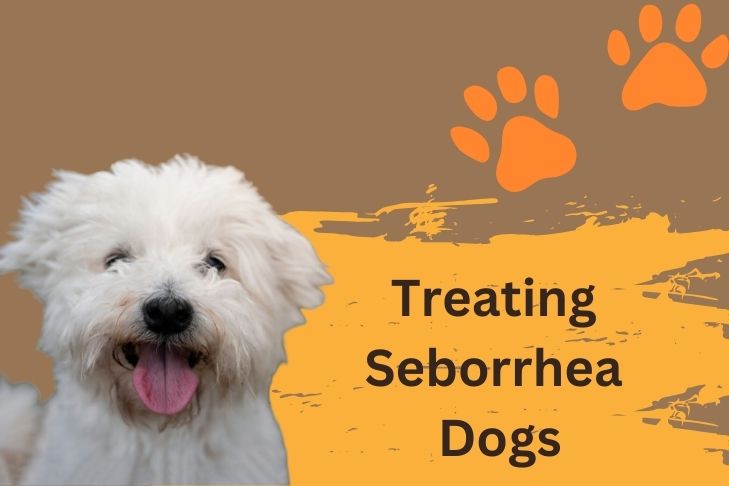
The treatment for seborrhea will depend on the type and underlying cause, if any. Here’s what you can expect:
- Addressing the underlying cause: If allergies, infections, or other health issues are found, treating them is crucial.
- Dietary changes: Special diets formulated for skin health may be recommended, especially if your dog has nutritional deficiencies.
- Antibiotics or antifungals: If bacterial or yeast infections are present, medications may be necessary.
- Regular bathing: Frequent bathing of your furry little pups with a medicated shampoo, as recommended by your veterinarian, can help manage symptoms.
Dietary Management for Seborrhea Dogs
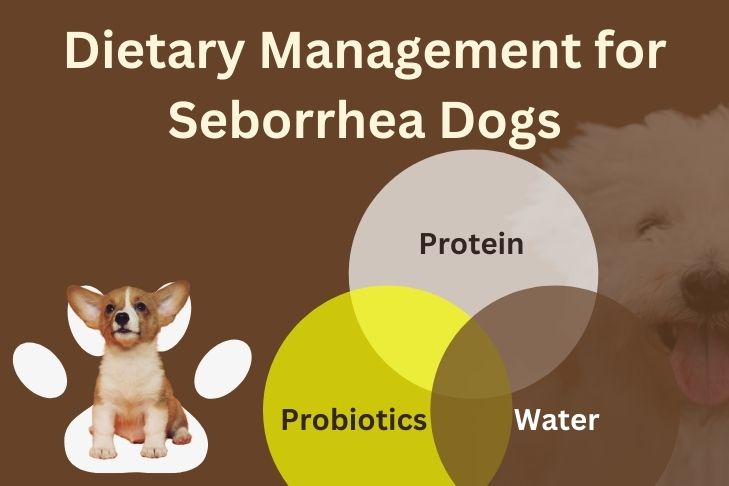
While not a cure, a well-balanced diet rich in essential nutrients can significantly improve your dog’s skin health and manage seborrhea symptoms. Here are some key dietary tips:
- High-quality protein: Opt for protein sources like salmon, chicken, or lamb that are easily digestible and provide the building blocks for healthy skin.
- Probiotics: These can help restore a healthy gut microbiome, which plays a role in skin health. Consider adding a probiotic supplement after consulting with your veterinarian.
- Freshwater availability: Ensure your dog has access to clean, fresh water throughout the day to stay hydrated and support healthy skin.
Are you interested to know a little more about dogs different health conditions? Find out blog on long term effects of ehrlichia in dogs here.
Living with a Seborrhea Dog
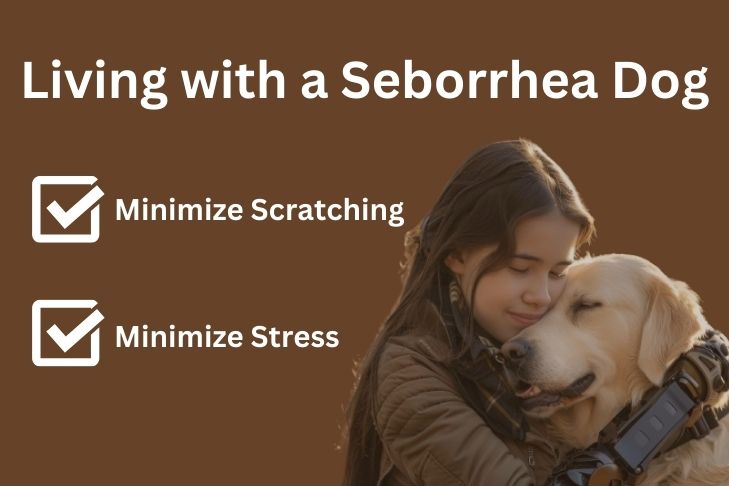
Seborrhea can be a chronic condition, requiring ongoing management. Here are some additional tips to keep your furry friend comfortable:
- Minimize stress: Stress can worsen skin conditions. Provide your dog with a calm and predictable environment and plenty of positive reinforcement.
- Minimize scratching: Offer distractions with toys and chews to discourage excessive scratching that can lead to secondary infections.
By understanding seborrhea dogs, recognizing the signs, and following your veterinarian’s treatment recommendations, you can help your big fluffy dogs manage the condition and find relief. With proper care and a supportive home environment, your dog can still live a happy and comfortable life, even with seborrhea.
Conclusion:
Claw Hive is here to support you and your dog on their journey to optimal health. We offer information on a wide range of high-quality dog food options that may benefit seborrhea dog. Consult with your veterinarian first, but feel free to browse our selection and contact us if you have any questions!



